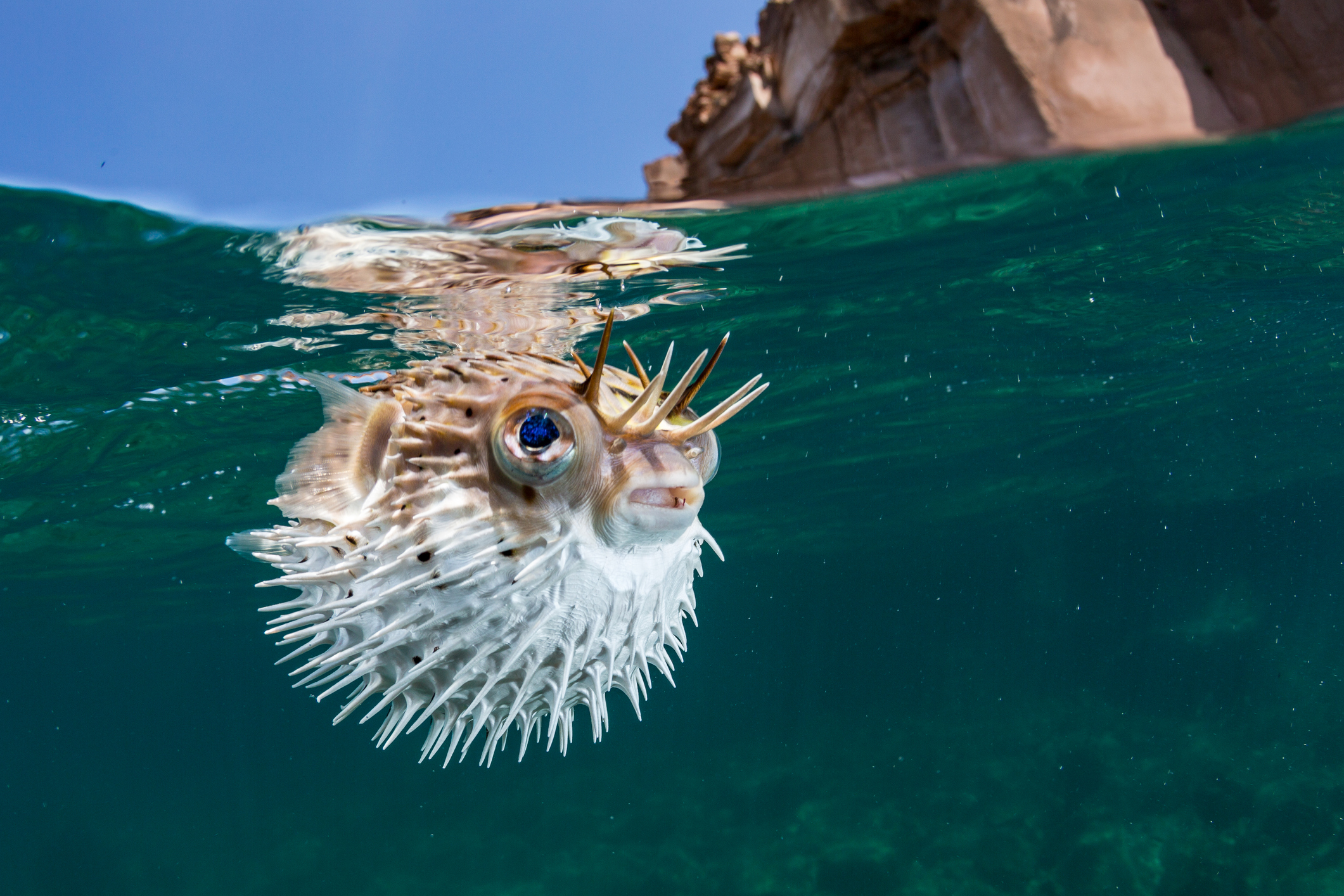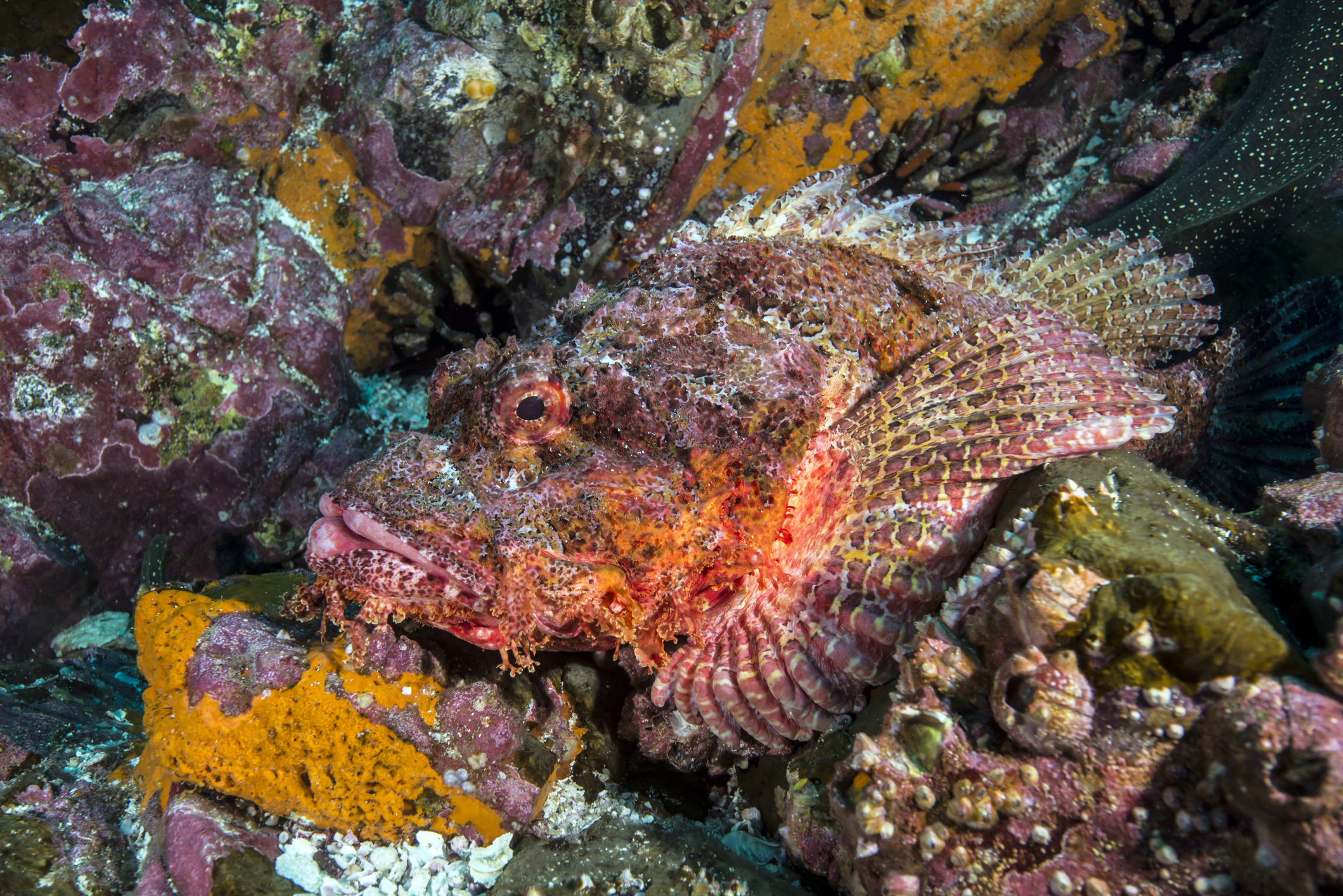If you’ve never had a good fishing nightmare, you’re missing out. Some are easy to conjure, like Jaws tailing his way into the flats while you’re wade fishing, or a swarm of piranhas tearing apart your buddy, who somehow slipped off the boat. Other fishing nightmares aren’t inspired by the violence a fish might commit, but more simply how the fish looks. These ugly fish—the ugliest fish in the world—are freaky enough to generate plenty of bad dreams.
Anglers and sailors have been telling stories about sea creatures for centuries. Those old stories undoubtedly influence the bad sci-fi fish movies we see today. But rather than get caught up in the fishing horror movie genre, it’s probably more interesting to look at where those tales of monstrous leviathans came from. I’m betting many of them were inspired by some of the crazy looking fish on this list.
The world’s ugliest fish aren’t science fiction. They’re found in shallow waters around North America, in the tropical waters of the South Pacific, and in some of the deepest waters explored by man. So without further ado, here’s a look at some of the ugliest, gnarliest, freakiest fish to swim the seven seas (and inland waters too).
Blobfish
Ah, the blobfish. If we were ranking these poor, plain piscatorial nominees, which we’re not, the blobfish would be the winner. Right? I mean, ios that even a fish? Yes, it is. The blobfish is found in deep waters (a recurring theme among these ugly species) down to 3,900 feet near New Zealand and Australia. At that depth, an air bladder would be useless so the blobfish doesn’t have one. Its flabby, gelatinous body allows it to suspend just off the ocean floor and float around. It eats whatever floats in front of it. Photos make it look like a bowl of bread dough left on the counter, but that’s because it is typically photographed out of the water. Researchers say in the water it actually looks more fish-like as it floats around.
Bowfin
Known as a mudfish, grinnel, dogfish and other unprintable names, the freshwater bowfin might be one of the handsomest of the ugly fish on this list. Bowfin are found in the eastern U.S. It has sleek lines, which helps it navigate tight ambush spots. Its long dorsal fin and wide tail help it cruise through the water. What’s ugly is its beady eyes, mouthful of teeth, and muscular, snake-like body. The bowfin is monstrously aggressive, biting, and snapping at anything that gets near its mouth. Catch one and a fish-gripper or pliers might be best to hold it while trying to extract the lure.
Bowfin are popular among some anglers for their aggressiveness and size. Adults grow to about 27-30 inches and up to 5 pounds. Don’t get them confused with non-native snakeheads, which resemble bowfins but have an extended anal fin and pelvic fins are near the pectoral fins and gills.
READ NEXT: How to Catch Bowfins in Rivers and Tidal Systems
Burbot
The burbot are found in northern freshwater lakes and rivers. They breed in frigid waters; what else is there to do in winter, right? Burbot have a smashed, flat face, wide mouth, elongated body, fat belly, long dorsal fin, protruding nostrils and one chin whisker (known as a barbel). It’s not a speedy fish and doesn’t do well in swift waters. They hide out, pretty much, in deeper water; some have been recorded to 980 feet in Lake Superior. These ugly ducklings are found throughout North America from Alaska to New Brunswick, and in Europe and Asia. Ugly as they may be, burbot are an excellent eating fish and are described as the “poor man’s lobster” by some.
READ NEXT: Indiana Fisherman Breaks Burbot Record Twice in One Day
Flathead Catfish

Of all the commonly known catfish species, the flathead surely takes the prize of Top Ugly. Neither the blue nor channel cat are lookers, the flathead, though, makes you look twice. It typically has an olive-colored body with yellowish-white belly. Some anglers call it a “yellow cat,” which isn’t an official species but is common enough that catmen will know what you’re talking about. Depending on the location and age, it may have more of a yellowish or dark hue. It’s also know as a mudcat and shovelhead. Its body is long and flat, unlike the stocky blue cat that sports a bulging belly. Flatheads have tiny eyes for their size, along with a wide mouth. Its lower jaw extends past the upper. A fan of live forage such as crayfish, sunfish, and larger gizzard shad. Despite the ugly features, flatheads are tremendous hunters thanks to a keen sense of taste and detection of vibrations emitted by other species.
READ NEXT: Tips for Catching Trophy Flathead Catfish
Flounder
I mean, c’mon. How can the flounder not be one of the ugliest fish anywhere? They have two eyes on one side of their head, or body, or face, or whatever it is. Their bodies are weird, too, like a deflated football. Flounder have a mottled, olive-brown coloration with a white belly, which is similar to fluke, halibut, plaice, turbot, sole and other species of the flatfish family. They all have similarities, including flat bodies, a long and frilly dorsal fin, and eyes on the same side. That happens a few weeks after birth when the fish’s body and skull begin changing, and both eyes end up on the same side. They’re carnivorous, going after minnows and crabs. Flounder are found in the Atlantic Ocean from Nova Scotia down the East Coast to Florida and the Gulf.
READ NEXT: How to Catch Inshore Flounder from a Kayak
Hagfish
Ask a child to draw their wildest imaginary fish and chances are good they might sketch something like the hagfish. It has a skull but no spinal column. It doesn’t have jaws. Their skull isn’t hard bone, but instead is cartilage, as is their vertebrae. They have long bodies with skin that looks like a rumpled sock, or maybe a hairless cat. Their skin may be pink, blue-gray or some other color, depending on species and location. It contains most of their blood, thus the flabby appearance like a plastic grocery bag full of water. The skin also contains sacs of slime or mucous, which is venomous, and may be able to aid with respiration when the fish is buried in mud. The hagfish looks more like a giant earthworm, to be honest, although technically it’s a fish. It’s one of the most-studied species, too, with its mucous and skin offering biologists and scientists numerous opportunities. But, it’s damned ugly. It’s found in the deep waters of the North Atlantic.
Mola

Back in the late 1990s I was fishing with some friends about 40 or so miles out in the Gulf of Mexico south of Orange Beach, one of Alabama’s top launch points. We were working the bottom cover for red snapper when someone pointed at something in the water. It was a mola, one of the most unique and, some would say, ugly fish in the seas. Also known as the ocean sunfish, the mola can grow to 11 feet and weigh more than 2.5 tons. The mola has a bullet- or missile-shaped body with two fins near its rear, which also is a fin. But the rear fin its born with never grows, and instead becomes a rudder. The mola moves with its dorsal and anal fins. Often seen sunning on the surface. These giant fish gobble jellyfish (hurray!) and are curious enough to come near boats. I was glad the one we saw years ago was curious, because despite being ugly it was pretty cool to see. Mola can be found in warm waters all over the world.
Porcupinefish

The porcupinefish is similar to pufferfish but in a different family, so the species are closely related but not the same. My aunt and uncle had a puffer on their table when I was a kid and I always wondered what kind of fish might eat it. Not many, to be sure. Porcupinefish may look harmless until they inflate their bodies, either by swallowing water or air. When they do, they increase in size by almost double. The ugly part comes during the inflation when spines along their body stick out like that dude from Hellraiser. These sharp spines further dissuade hungry predators. If that’s not enough, some species of porcupinefish have a neurotoxin called tetrodotoxin in their organs. Some larger species such as sharks, tuna, and dolphin still eat them, but most fish avoid them. Porcupinefish are found mostly in tropical seas and shallow waters in temperate zones.
Sea Robin
The sea robin is an ugly deep-water dweller. Found in numerous locations, one immediate thing you notice is its large pectoral fins. They look like wings, thus giving this unique fish its name. Some sea robins have delightful colors. Mostly, though, sea robins have drab colors of olive or brown. Their head and face looks like a shovel, or like someone smashed a fish with a shovel, and is almost sturgeon-like. The gill plates and dorsal fins have sharp spines which emit a venom that is painful for several days. Sea robins also are known as a gunard for the deep croaking sound made when caught. They live in deep water and can be caught with drop rigs baited with crab or fish.
Scorpionfish

Scorpionfish are among the world’s ugliest and most deadly fish. Their ugliness helps them, actually, by providing camouflage amid the bottom features where they live. With a lumpy, bumpy body, flattened head, venomous spiny fins, they fit in nicely with rocks, anemones, coral, sponges and other bottom-dwellers. Scorpionfish will lie in wait at night to ambush fish, which don’t know what’s coming until they’re smacked. During the day, they chill out. Woe to any predator that attempts to eat a scorpionfish, or a person who touches one. Their spines emit venom that is painful to humans and deadly to fish. Lionfish found in the Gulf of Mexico and Florida waters are related to scorpionfish, which are mostly found in the Indian and South Pacific oceans.
Toadfish

With a face only a mother could love, as they say, the toadfish would be among the top finalists for ugly fish of the year. Toadfish is the common name for the species found in the Gulf of Mexico, Atlantic, South Pacific, and elsewhere. It primarily is found in warmer, shallow waters and easily blends in with its surroundings thanks to great camouflage. Similar to the scorpionfish, its lumpy and bumpy body helps it seamlessly fit in with bottom cover. Toadfish lie in wait to ambush its prey. Its dorsal fin has a venomous spine, which is painful to humans and deadly to many aquatic species. It dines on squid, smaller fish, mollusks, and crustaceans. In the Gulf of Mexico, it hangs out around oyster beds, seagrass beds, around rock jetties and pilings, pipes, concrete, marina structures or similar hard cover. With its extra-large eyes, frilled lips, and nasty disposition, the toadfish is one ugly cookie.
